calsfoundation@cals.org
Capital Hotel
The Capital Hotel in Little Rock (Pulaski County), situated near Arkansas’s first state capitol building (now known as the Old State House), has been part of the city’s history since 1872. Once the most luxurious hotel in the state, it often served as an unofficial political headquarters, where decisions, as well as political careers, were made. In 1974, the hotel was listed on the National Register of Historic Places.
Built near the river port, the Denckla Block, as it was first known, was built to house offices, shops, and gentlemen’s apartments for businessmen. In the second half of the nineteenth century, after the end of the Civil War, Little Rock was a growing river port and rail station. There was already an upscale hotel on the river, the Metropolitan, so William P. Denckla, a wealthy New York railroad tycoon, saw a business opportunity in creating a place to nurture commerce in the capital city of the growing state. Denckla purchased the land on which to build from Arkansas supreme court justice George C. Watkins. In the spring of 1872, construction began. After Watkins’s death in 1872, just as the building was nearing completion, Denckla sold the complex of stores, offices, and “bachelor quarters” back to the judge’s heirs. It lay diagonally across from the Metropolitan Hotel and directly across from City Hall.
One of the Capital Hotel’s most notable features is the prefabricated cast-iron façade that is part of the original construction (though it has been added to since). This architectural detail was built out of state—where is not known for certain—and shipped to Arkansas. The building was designed and constructed to accommodate the façade, which is not only decorative but a vital structural element as well.
Though not originally built as a hotel, the Denckla Block became one in 1877 after the Metropolitan Hotel, the city’s only upscale hotel, burned on December 14, 1876. The manager of the Metropolitan, Colonel A. G. DeShon, along with Major John Adams, was instrumental in leasing the Denckla Block as a home for a new hotel, persuading its agents at the time of the need for a grand hotel in the capital city. The new hotel got its name from a Little Rock matron, Mrs. Morehead Wright. When asked by Adams and DeShon to suggest a name, Wright noted that it was a “capital enterprise located in a capital building” in the “capital of the state,” which she hoped would be a “capital success.” Hence, in January 1877, the Capital Hotel opened with a new, grand interior created to match its grand exterior. The hotel hosted many notable political and historical figures, including President Ulysses S. Grant. (Legend says that the Capital’s unusually large elevator was built to allow Grant to take his horse to his hotel room, although this is false; the large elevator was added during renovations in the 1980s.)
Over the next century, the hotel would change hands several times. It was closed, renovated (with architect George Mann doing the design), and reopened in 1908. For years, the hotel was the center of political activities, as well as social events. During the 1960s and 1970s, however, the entire downtown area of Little Rock declined, and the Capital Hotel fell into disuse and disrepair. In the early 1980s, architect Ed Cromwell, with a group of other investors, began the work of restoring the hotel to its original grandeur. The doors opened once again just before Christmas of 1983. Another restoration project closed the hotel for two years, but it opened for business again in November 2007. In 2013, Forbes Travel Guide awarded the Capital Hotel a four-star rating. In 2014, it was chosen by the editors of Southern Living magazine to be part of its Southern Living Hotel Collection.
For additional information:
“Capital Hotel.” National Register of Historic Places nomination form. On file at Arkansas Historic Preservation Program, Little Rock, Arkansas. Online at https://www.arkansasheritage.com/arkansas-preservation/properties/national-registry (accessed October 16, 2025).
Capital Hotel Materials. Butler Center for Arkansas Studies. Central Arkansas Library System, Little Rock, Arkansas. Finding aid online at https://cdm15728.contentdm.oclc.org/digital/collection/findingaids/id/6230/rec/1 (accessed June 5, 2024).
Lester, Jim, and Judy Lester. Greater Little Rock: A Pictorial History. Norfolk, VA: The Donning Co. Pub., 1986.
Weintz, Steven. A Capital Idea: An Illustrated History of the Capital Hotel. 150th anniversary edition. Fayetteville: University of Arkansas Press, 2026.
Sharolyn Jones-Taylor
Little Rock Central High School
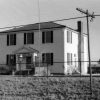


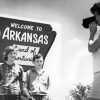
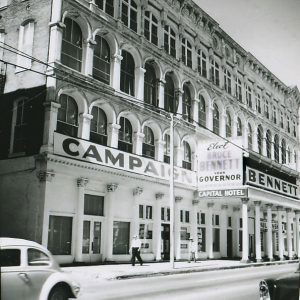 Bennett Campaign Headquarters
Bennett Campaign Headquarters 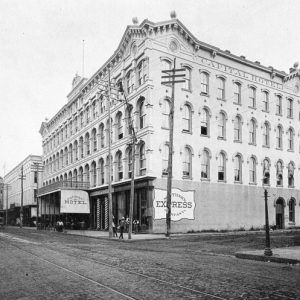 Capital Hotel; 1892
Capital Hotel; 1892  Capital Hotel; 2008
Capital Hotel; 2008 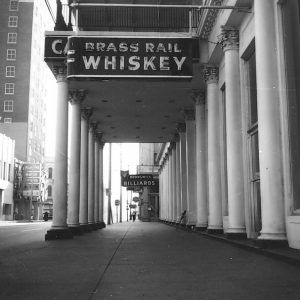 Capital Hotel Columns
Capital Hotel Columns 



Comments
No comments on this entry yet.